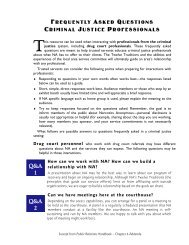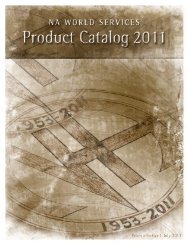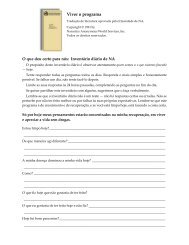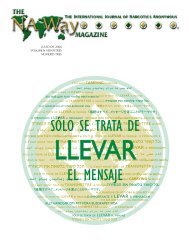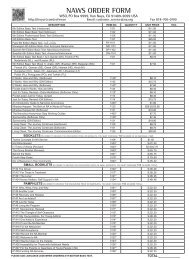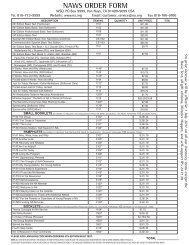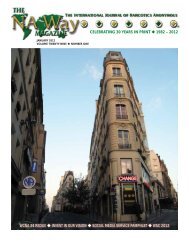Public Relations Handbook - Narcotics Anonymous
Public Relations Handbook - Narcotics Anonymous
Public Relations Handbook - Narcotics Anonymous
Create successful ePaper yourself
Turn your PDF publications into a flip-book with our unique Google optimized e-Paper software.
committee chairperson. We need other NA members to be truly successful inbuilding and maintaining relationships with the public. Cooperation and collaborationin our areas and committees can help us provide an attractive message of recoveryto the public. How does our individual behavior impact the attractiveness of the NAprogram? What can members do to make NA more attractive to the public?Cooperation, not affiliationWe are more likely to form productive and cooperative relationships when wesimply and honestly review what services we can and cannot offer to others. Forexample, if we are forming a relationship with a treatment or correctional facility,we ask about their expectations of NA. Maybe they have requested weeklymeetings and, after an honest assessment, we decide that we cannot meet theirrequest. Instead, we can offer a meeting on a monthly basis. In this manner, wecreate a relationship that we can responsibly sustain over time. We practicecooperation by being honest about what we are able to provide, and we still find away to respond to requests. As a result, public organizations learn to trust ourmembers and rely on our program as a credible community resource. How can we work with the public and other organizations without mergingor affiliating with them? What is our experience (as members and as an area) with cooperating withthe public?<strong>Public</strong> relations and addiction treatmentAs a result of an area planning process (see the resource to Chapter Three forthe Area Planning Tool), trusted servants may have decided that building strongerrelationships with local treatment facilities is a priority. The area service committeecan then discuss what it is capable of providing, what the local treatment facility mayhave requested from NA, and what it believes is necessary to make NA’s messageavailable in local treatment settings.P l a n n i n g a n d p r e p a r a t i o n f o r a r e a s a n d c o m m i t t e e sIn addition to the area’s planning process, the following questions can be helpfulwhen trusted servants are evaluating and deciding what kinds of services they canprovide in treatment settings. These questions can help an area have broaddiscussions about ways to create strong relationships with treatment staff. Are we interacting with treatment professionals in a spirit of cooperation?Are we approaching treatment facilities with an attitude that the NA programand a treatment program share the common goal of helping addicts stay clean,although our methods may vary? Are we providing the treatment facility with relevant information about NA?Have we provided the treatment facility with a reliable NA contact? Have wegiven the facility the NA product catalog and/or an initial supply of NAliterature? Are we regularly mailing up-to-date NA meeting schedules totreatment facilities? How can the area (or committee) work with treatment professionals to ensurethat clients are able to easily access NA; for example, have we made treatmentprofessionals aware of NA meetings in the community?64 | Chapter 7 | Treatment





